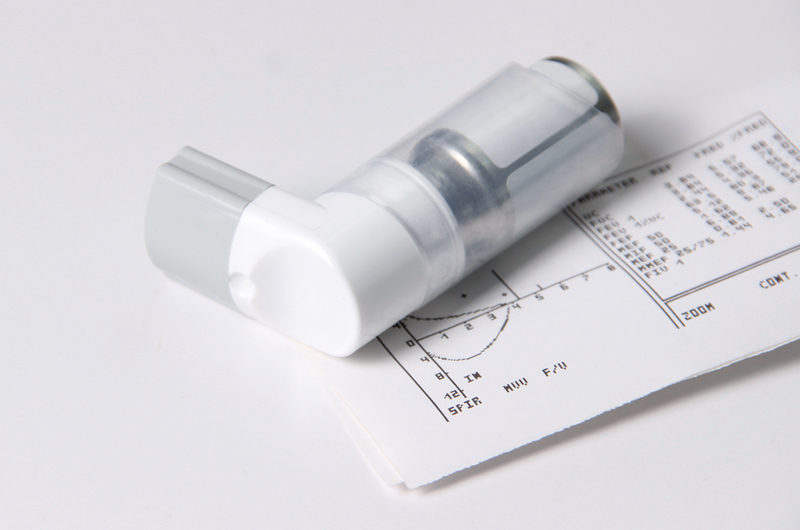Two new lung function trajectories identified by researchers may predict COPD risk
M3 Global Newsdesk Jun 25, 2018
Researchers have identified six possible FEV1 trajectories, including two novel trajectories, in a recent cohort study published in The Lancet Respiratory Medicine.

Three of the trajectories were associated with modifiable early-life exposures and contributed to 75% of COPD burden. “Our study is unique in that, to our knowledge, it is the first to characterize lung function trajectories in a large general population sample from early childhood to the sixth decade,” wrote the authors, led by Dinh S. Bui, MPH, Centre for Molecular, Environmental, Genetic and Analytic (MEGA) Epidemiology, The University of Melbourne, Australia. “This analysis is of considerable importance because understanding lifetime lung function is crucial for population-based interventions to promote healthy trajectories and prevent unhealthy ones.”
Understanding how lung function measurements change during life plays a crucial role in predicting lung pathology, prevention, and management, according to the authors. Over time, different people experience distinct lung function trajectories due to phases of growth and decline. These trajectories could predict risk for COPD.
Few researchers have looked at lifetime lung function trajectories. Furthermore, according to a review done by the team, no study has been able to ascertain the decline phase, which occurs after the fourth decade of life. “Although evidence suggests that both maximally attained FEV1 and its decline are associated with the COPD development,” the researchers wrote, “the relationship between the full expression of lung function— encompassing an individual’s trajectory capturing both growth and decline—and COPD has never been reported.”
Although there is normal variation in lung function trajectories among the general population, Matheson and colleagues suggest that members of a subpopulation could display similar FEV1 trajectories. Consequently, the researchers analyzed The Tasmanian Longitudinal Health Study, which followed Tasmanian school children from age 7 years starting in 1968, with a most recent follow-up in 2015.
At baseline, the children in the study received a clinical exam including pre-bronchodilatory spirometry, and their parents filled out a questionnaire. The researchers performed follow-up assessments at 13, 18, 45, 50, and 53 years. In total, the researchers included 2,438 patients with at least two waves of data at age 7 years and 53 years. The researchers used data from six waves to model lung function at 7, 13, 18, 45, 50, and 53 years. They used group-based trajectory modeling to characterize specific subgroups of participants who followed similar temporal patterns.
On the basis of logistic regression, the team compared the trajectories they characterized with COPD risk and childhood factors documented at age 7 years, including asthma, bronchitis, eczema, allergic rhinitis, food allergy, pneumonia, breast feeding, weight status, parental asthma, and parental smoking.
Matheson and co-authors categorized participants according to the following six trajectories:
- Early below average, accelerated decline (4%)
- Persistently low (6%)
- Early low, accelerated growth, normal decline (8%)
- Persistently high (12%)
- Below average (32%)
- Average (39%)
The two novel trajectories were “early below average, accelerated decline” and “early low, accelerated growth, normal decline.” The authors state that these new trajectories contradict the idea that lung function established in childhood follows a constant arc throughout life.
Three trajectories—early below average, accelerated decline; persistently low; and below average—had the greatest COPD risk at 53 years when compared with that of the average group. These three trajectories contributed to 75% of COPD burden.
Moreover, childhood factors, including childhood asthma, bronchitis, pneumonia, allergic rhinitis, eczema, parental asthma, and maternal smoking, predicted these trajectories. Synergistic effects were noted among childhood and eczema (P=0.068) and allergic rhinitis (P=0.062).
“We postulate that reducing maternal smoking, encouraging immunization, and avoiding personal smoking, especially in those with smoking parents or low childhood lung function, might minimize COPD risk,” the researchers concluded. “Clinicians and patients with asthma should be made aware of the potential long-term implications of non-optimal asthma control for lung function trajectory throughout life, and the role and benefit of optimal asthma control on improving lung function should be investigated in future intervention trials.”
To read more about this study, click here.
This story is contributed by Naveed Saleh and is a part of our Global Content Initiative, where we feature selected stories from our Global network which we believe would be most useful and informative to our doctor members.
-
Exclusive Write-ups & Webinars by KOLs
-
Daily Quiz by specialty
-
Paid Market Research Surveys
-
Case discussions, News & Journals' summaries